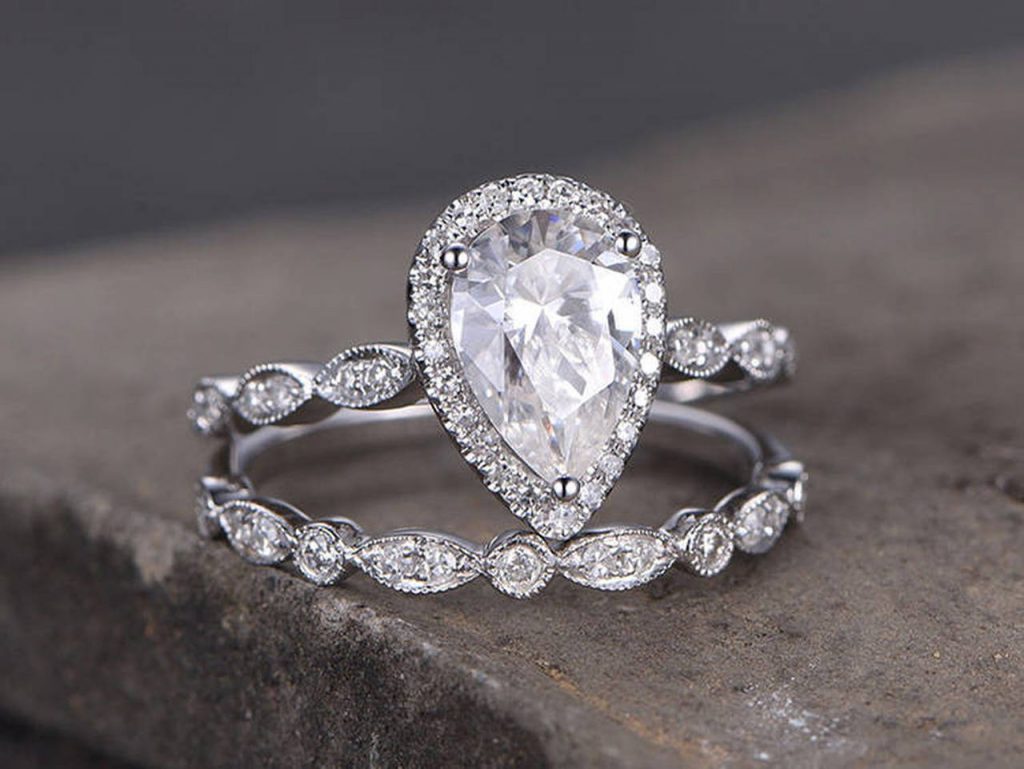Which diamond size to choose for a best engagement ring?

Dating back to ancient times, the engagement ring has been synonymous with commitment and love for millennia. So, when choosing the ring that marks this important stage in life, choosing a piece of jewelry can seem very difficult. Indeed, you have to choose the setting, diamond solitaire or more composed diamond ring, the style as well as the stone which often plays a central role thanks to its symbolism. In the world of precious stones, diamonds remain a constant and a true inter-temporal classic.
Appeared at the beginning of the 15th century on the setting of rings, the purity and beauty of the diamond made it a stone for the wealthy which was to signify harmony within the couple. Even today, diamonds are still as successful as ever and the tradition of solitary diamonds has continued for generations. Thus, if your choice is the symbol of eternity of the diamond, many options are possible to personalize your engagement ring. As an exceptional stone, the diamond has been offered a particular language with four criteria, more commonly called the “4C” (Cut, Carat, Clarity, Color) which are respectively its size, its weight, its purity and finally its color.
The carat is the unit of measurement of the diamond. This unit thus measures the weight but is also indicative of its size. Thus, a one-carat stone usually measures around 6.5mm. Many sizes or “cut” exist in order to be able to satisfy all desires and to match the diamond with the personality of the one who will wear the engagement ring, alone or accompanied by other diamonds.
The Maison Van Hoye, expert in diamonds, thus realizes bespoke diamond engagement ring to offer its clients the engagement ring they have always dreamed of. The size of the diamond and the correct completion of the cut are essential in order to preserve all the brilliance of the diamond and its unique characteristics. Thus, the depth and proportions of the stone (length, width) must be taken into account in order to select the best size for the diamond. In fact, the more carats the diamonds contain, the more important the size will be to keep its shine.
The rounded shape, the marquise diamond and the pear shape, true classics :
The round or “brilliant” is one of the most popular shapes for diamonds because it is believed to optimize the brilliance of the diamond by controlling the behavior of light. Its shape is historical, jewelry nearly 600 years old already having a “prototype” shape of this cut. Comprising exactly 57 facets (the last being the “table” of the diamond), the round shape is generally the most sought after.
The marquise diamond comprises 55 facets. Dating back to the famous mistress of Louis XV, the Marquise de Pompadour, the marquise cut seduces with its elegant oval shape and original conical ends. The second most requested shape after the round is that of the pear diamond. Inspired by the marquise diamond, it is often called the “drop of water”. Often chosen for pendants, it can also be chosen for an engagement ring for its singular and delicate shape.

A touch of modernity with princess, heart and diamond cuts :
Since its development during the 1960s, the princess cut diamond has quickly found its place among the most popular shapes. Square in shape, it gives a touch of modernity to the engagement ring. If it can be mounted as a solitaire like the round brilliant, it is also very popular when accompanied by two other diamonds in “trilogy” on the ring. Being able to comprise from 49 to 78 facets, it can also have a rather rectangular shape with sharp angles and not cut.
The heart cut, often considered “more fancy” in the cut, resembles that of the brilliant or the marquise. It is thus inspired by the most popular shape of diamonds but modifying it so that the stone is in the shape of a heart, this one obviously signifying love and passion.
In another style that is also more modern, the diamond cut falls into the category of “step” cuts, that is to say a cut where the facets are parallel to each other. This type of cut is found for emerald cut diamonds. With a wider table, this shape highlights the purity and transparency of the diamond. Refined and sober, it has 58 facets. Less worked than the traditional “brilliant”, the emerald cut rests its singularity on a lesser but soft brilliance of the stone.
Many other sizes available for a unique diamond engagement ring :
As diamonds have been worked for many centuries, jewelers and artists have developed many sizes that allow the full potential of this precious stone to be explored. Thus, the diamond can also be cut in the shape of a cushion, which has often been the benchmark cut from the 19th century. With rounded angles and facets giving a “domed” effect, the cushion offers a delicate and elegant size.
Finally, the Asscher-shaped diamond has 74 facets and is largely inspired by the emerald cut with a “step” cut. Octagonal in shape, it approaches a square. Invented at the beginning of the 20th century by Abraham and Joseph Asscher, the Cullinan (the largest diamond in the world which belongs to the British royal family) is cut in the Asscher shape. Sober and original, it is a safe choice for a singular and unique diamond engagement ring. All of these choices will allow you to find the ideal size for your custom engagement ring to make your request unforgettable.







